What can I substitute for Orzo?
So, you need to find a substitute for orzo pasta. You’re in your kitchen, ready to whip up a delicious dish, only to find out you’re out of orzo (sometimes referred to as risoni). Well, don’t worry, I’ve been able to come up with some fantastic alternatives for you.
Imagine a world where couscous becomes your pasta superhero, its tiny, fluffy grains ready to take center stage. While most sites throw the usual suspects at you, like rice or quinoa, we’re also going beyond the basics. Ever thought about trying fregola or acini di pepe? These ingredients can bring their own unique textures and flavors to the table, elevating your dishes.
Alright, let’s talk practicality. How do you seamlessly swap orzo with these alternatives? Whether you’re making a comforting soup, a zesty salad, or a creamy risotto, these substitutes will have you covered.
Try using: Couscous, Fregola, Acini di Pepe, Iraseli Coucous (Ptitim), Spaghetti, Quinoa, Rice, Barley, Farro, or Pastina.
What is Orzo?
Well orzo is actually a pasta. Technically, orzo translates to “barley” in Italian, but don’t be fooled; it’s not made from barley. Instead, it’s crafted from durum wheat semolina, giving it that pasta-like texture.
Orzo is often mistaken for rice due to its small, rice-like shape, but it’s pasta through and through. Despite its pasta tag, orzo is often used in recipes where you’d expect rice. It absorbs flavors beautifully and adds a unique touch to any dish. So, next time you’re pondering pasta choices, give orzo a whirl.
What can I substitute for Orzo Pasta
Here are some of the best ingredients to substitute the flavor and role that orzo provides in your recipes.
- Couscous
- Fregola
- Acini di Pepe
- Iraseli Coucous (Ptitim)
- Spaghetti
- Quinoa
- Rice
- Barley
- Farro
- Pastina
Orzo Pasta substitutes
Couscous
Couscous is a great ingredient to have in your cupboard. Tiny, light granules made from crushed and steamed wheat, it’s a staple in North African and Middle Eastern cuisines. The fluffy and slightly grainy texture adds a new dimension to your dishes.
Couscous and orzo share a similar size and shape, making them culinary comrades. Couscous has a neutral flavor, which means it can seamlessly adapt to various dishes, just like orzo does.
Whether you’re concocting a vibrant salad, a comforting soup, or a hearty casserole, couscous can step in and work its magic. It’s quick to cook – just add hot water or broth, let it fluff up, and there you go! You’ve got a simple base ready to mingle with your favorite ingredients.
So, using couscous as a substitute for orzo is a fantastic choice that adds a unique texture and flavor to your dishes. Here’s a quick guide to make the swap seamlessly:
- Cooking Method: Boil water or broth, just like you would for orzo. Use a 1:1 ratio of liquid to couscous. For added flavor, consider using vegetable or chicken broth. Once the liquid is boiling, remove it from heat, stir in the couscous, and cover the pot. Let it sit for about 5 minutes.
- Fluffing: After 5 minutes, fluff the couscous with a fork to separate the grains. It should be light and fluffy.
- Seasoning: Couscous has a mild flavor, so feel free to season it according to your recipe. Add herbs, spices, or a splash of olive oil to enhance the taste.
- In Recipes: Substituting couscous for orzo works well in various recipes. Whether it’s a salad, pilaf, or casserole, the couscous will complement the dish.
- Texture Consideration: Keep in mind that couscous has a smaller and more granular texture compared to orzo. This can add a delightful bite to your dishes.
Feel free to experiment with different couscous varieties, such as regular, or whole wheat, depending on the texture you desire.
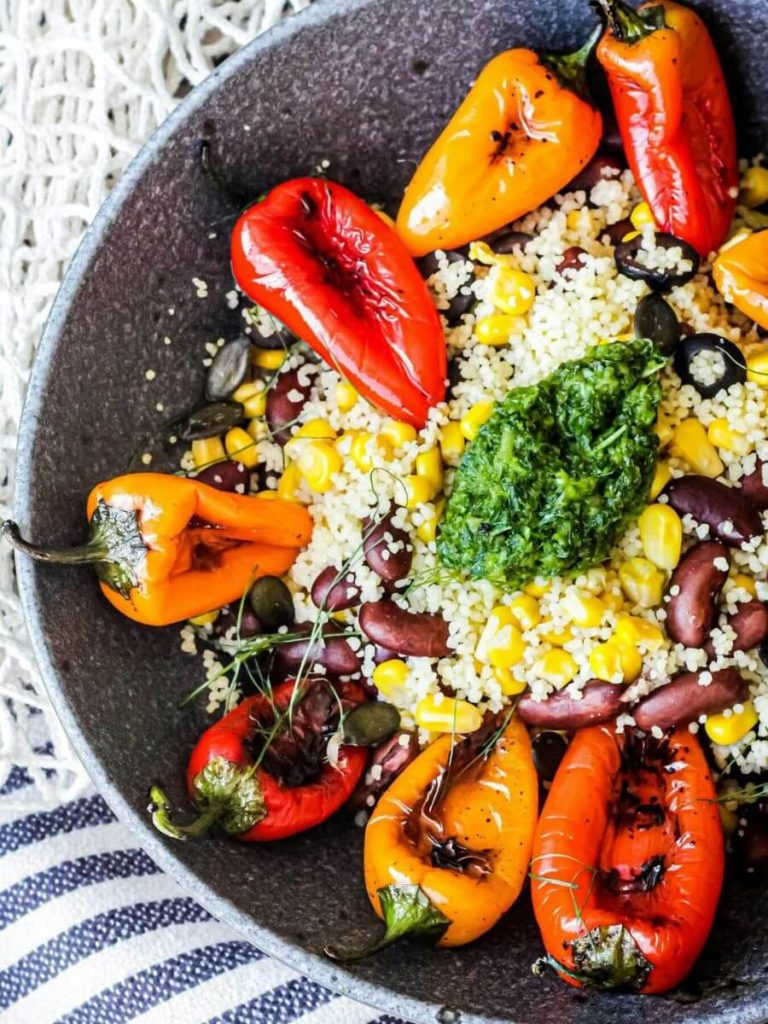
Fregola
Fregola is actually a traditional Sardinian pasta. It is made of small, spherical grains of pasta that are toasted to create a unique and nutty flavor profile.
Fregola and orzo share some similarities, especially in size and shape. However, fregola’s toasty flavor and slightly chewy texture make it a standout choice for those looking to add a bit of complexity to their dishes.
Substituting fregola for orzo is a fantastic idea, as both have a similar size and shape but differ in texture. Fregola, has a delightful chewiness that can add a distinct character to your dishes. Here’s a guide on how to use fregola as a substitute for orzo:
- Cooking Method: Boil water or broth, maintaining a 2:1 ratio of liquid to fregola. Add a pinch of salt to enhance the flavor. Once the liquid is boiling, stir in the fregola and reduce the heat to a simmer. Cook for about 10-12 minutes or until al dente. Keep an eye on it to avoid overcooking.
- Draining and Rinsing: Drain the cooked fregola and rinse it under cold water to stop the cooking process. This also helps to remove excess starch.
- Seasoning: Fregola has a nutty flavor, but it’s versatile enough to absorb other tastes. Consider seasoning it with olive oil, herbs, or spices based on your recipe.
- In Recipes: Fregola works well in various dishes, from salads to soups and casseroles. Its unique texture adds a pleasant chewiness that can elevate the overall eating experience.
- Texture Consideration: Keep in mind that fregola has a more substantial and chewier texture than orzo. This can be a delightful change, offering a bit more bite to your dishes.
Whether you’re crafting a hearty soup, a zesty salad, or a rich and creamy risotto, fregola can step in and elevate your dishes. Its robust taste brings a distinct character to the table, creating a memorable dining experience.
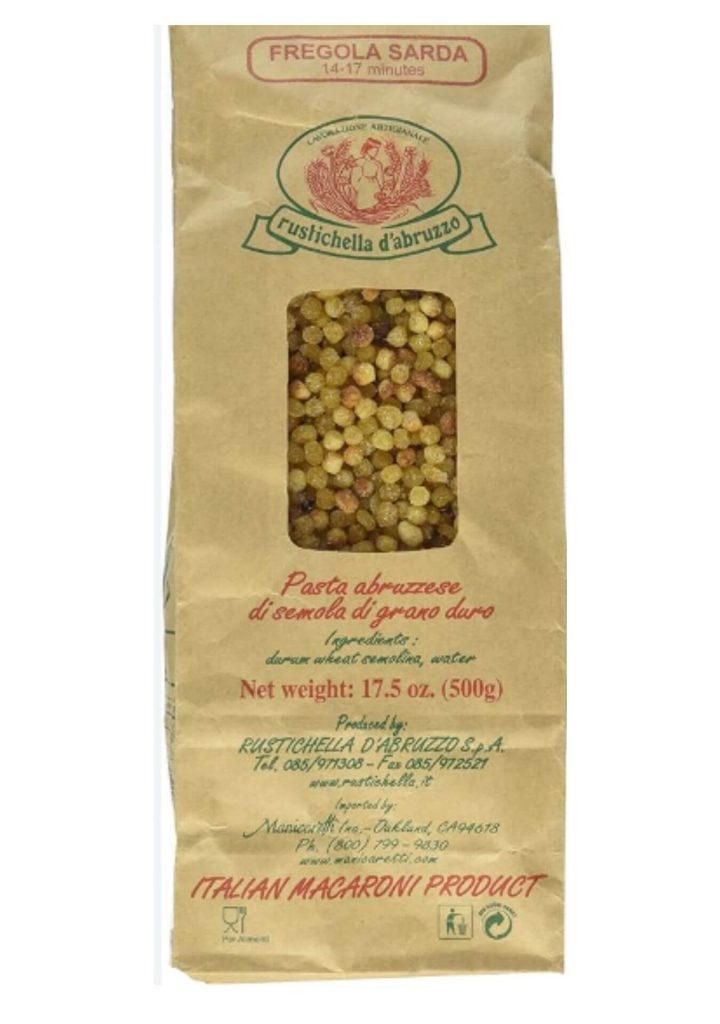
Acini di Pepe
Acini di pepe is a tiny pasta, with a name that translates as “seeds of a pepper”. And did you know they tiny pasta shapes are actually known as a symbol of fertility? Even today, they are still added into Italian wedding soup. The name acini di pepe translate into English as “seeds of pepper” as they actually resemble peppercorns.
Now, while the pasta shapes are not the same shape as orzo, they do share some similarities, such as their small and round shape. This tiny pasta shape is perfect when used in dishes such as hot dishes such as soups and stews, as it allows for the easy absorption of flavors. You can eve use it when cooking hot desserts.
- Cooking Method: Boil water or broth, similar to how you’d prepare orzo. Use a 1:4 ratio of liquid to Acini di Pepe. As they absorb more liquid than orzo, they will need a bit more liquid. Add the Acini di Pepe to the boiling liquid and cook for around 10-12 minutes, or until they reach your desired tenderness.
- Seasoning: Acini di Pepe has a neutral flavor, so it pairs well with various seasonings. Consider adding olive oil, herbs, or spices to enhance the taste.
- In Recipes: Acini di Pepe works really well in soups, salads, and casseroles. Their small size allows them to absorb flavors and blend well with other ingredients.
- Texture Note: Keep in mind that Acini di Pepe has a round shape, providing a different texture compared to the rice-like shape of orzo.
Whether you’re creating a fresh pasta salad or a comforting soup, Acini di Pepe will bring a delightful twist to your dishes.
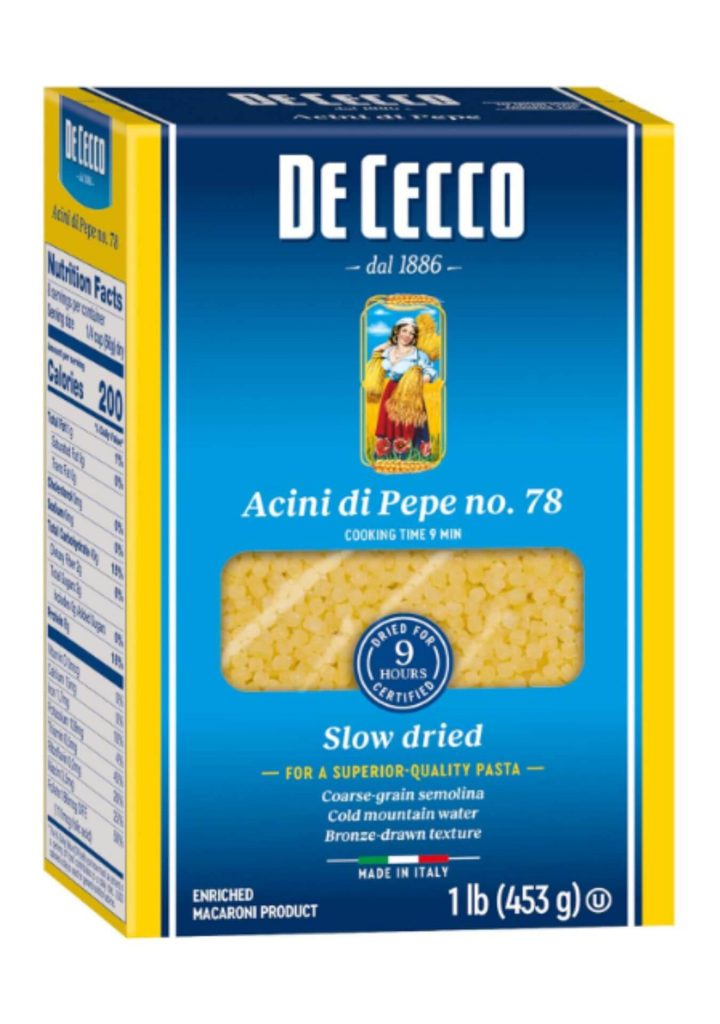
Iraseli Coucous (Ptitim)
Israeli Couscous, also known as Ptitim or Pearl Couscous, is a delightful pasta alternative that brings a unique texture and flavor to your dishes. Unlike traditional couscous, Israeli Couscous consists of small, round, and toasted pasta balls, giving it a distinct nutty taste and a chewy bite.
Now, let’s talk substitution! Can you use Israeli Couscous as a substitute for orzo? Absolutely! The two share a similar small and round shape, making Israeli Couscous a fantastic alternative when you’re out of orzo.
To make the swap seamless, consider these tips:
- Cooking Method: Israeli Couscous is usually toasted before cooking. Toast it lightly in a pan with a bit of olive oil for added flavor before boiling it in broth or water. This extra step enhances its nuttiness.
- Versatility: Just like orzo, Israeli Couscous is incredibly versatile. It works well in salads, soups, pilafs, and as a side dish. Its chewy texture adds a delightful dimension to your recipes.
- Flavor Pairings: Israeli Couscous pairs well with a variety of flavors. Try it with roasted vegetables, herbs, and your favorite proteins for a tasty and satisfying meal.
So, the next time your recipe calls for orzo and you find yourself with Israeli Couscous on hand, why not give it a go!
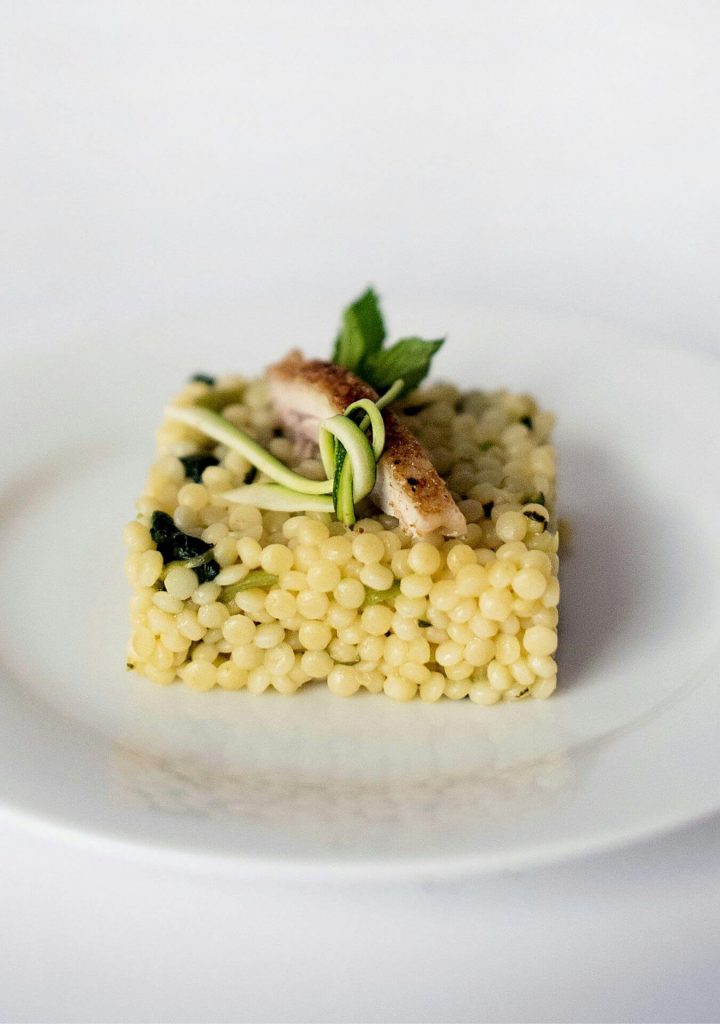
Spaghetti
Spaghetti, a classic long and thin pasta, is a staple in Italian cuisine. While it differs significantly from orzo in terms of size and shape, it can still be used as a substitute in certain dishes, adding a unique twist to your recipes. Here’s how you can use spaghetti as a substitute for orzo:
- Break into Smaller Pieces: To mimic the size of orzo, break the spaghetti into smaller pieces before cooking. Depending on your preference, you can break it into segments that are similar in length to orzo grains.
- Cooking Method: Boil the broken spaghetti in salted water until it reaches your desired level of tenderness. Be mindful of the cooking time, as broken spaghetti may cook slightly faster than whole strands.
- Versatility: Spaghetti can be used in soups, stews, and salads as a substitute for orzo. Its longer, more slender shape provides a different texture, but it can still absorb flavors and complement various dishes.
- Creamy Dishes: If your recipe involves a creamy or cheesy element, broken spaghetti can work well. It won’t have the same bite as orzo, but it can create a comforting and satisfying texture.
- Stir-Fries and Skillet Dishes: Broken spaghetti can be used in stir-fries or skillet dishes where its unique shape adds an interesting element. Consider it a playful variation in your favorite recipes.
- Kid-Friendly Meals: Broken spaghetti can be a hit with kids, especially when used in dishes that encourage twirling and slurping. It can add a touch of fun to family-friendly meals.
While spaghetti won’t replicate the size and shape of orzo, it can bring its own charm to your culinary creations.
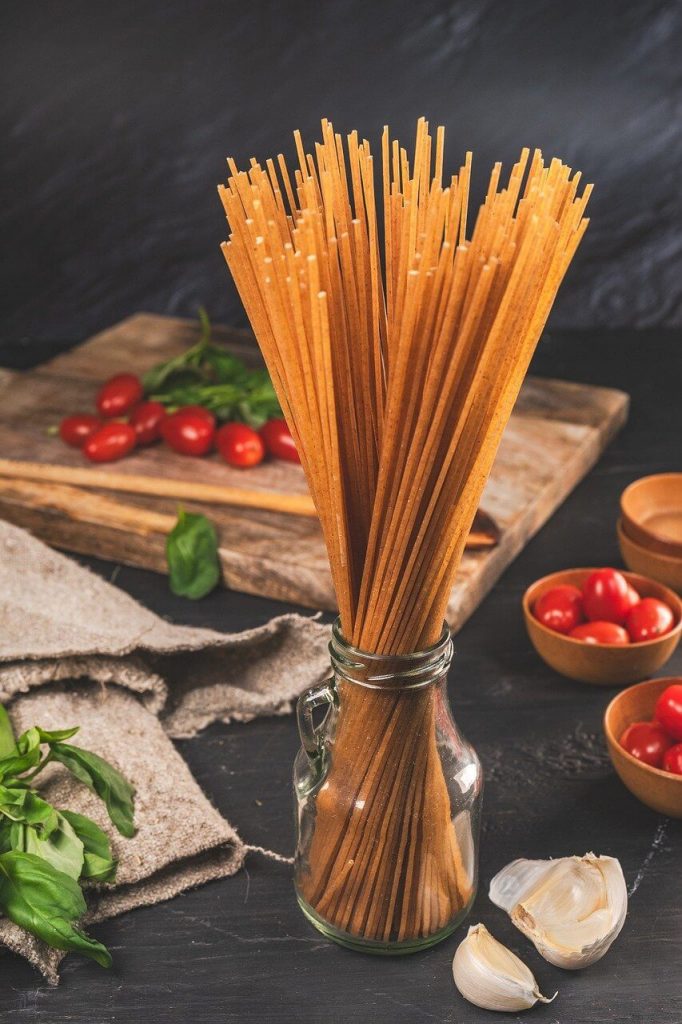
Quinoa
Quinoa is a nutrient-rich, gluten-free grain that has gained popularity for its outstanding health benefits. Native to South America, quinoa is known for its high protein content, making it a great alternative for those seeking a protein boost in their diet.
While quinoa is not a pasta, its small, bead-like shape and neutral flavor make it a versatile substitute in many recipes. Here’s how you can seamlessly incorporate quinoa into dishes that call for orzo:
- Cooking Method: Rinse the quinoa thoroughly before cooking to remove its natural coating, which can have a bitter taste. Boil quinoa in water or broth, following the package instructions, until it’s tender. The cooking time is typically around 15-20 minutes.
- Texture and Size: While quinoa is smaller than orzo, it still provides a delightful texture and adds a unique touch to your dishes. Its slightly nutty flavor can complement a variety of recipes.
- Versatility: Quinoa works well as a substitute in salads, soups, and side dishes where orzo is a key ingredient. Its ability to absorb flavors makes it an excellent canvas for various culinary creations.
- Nutritional Boost: One of the major advantages of using quinoa is its nutritional profile. It’s a complete protein, containing all nine essential amino acids, making it an excellent choice for those looking to increase their protein intake.
So, whether you’re making a refreshing salad or a hearty soup, quinoa can step in as a nutritious and gluten-free substitute for orzo.
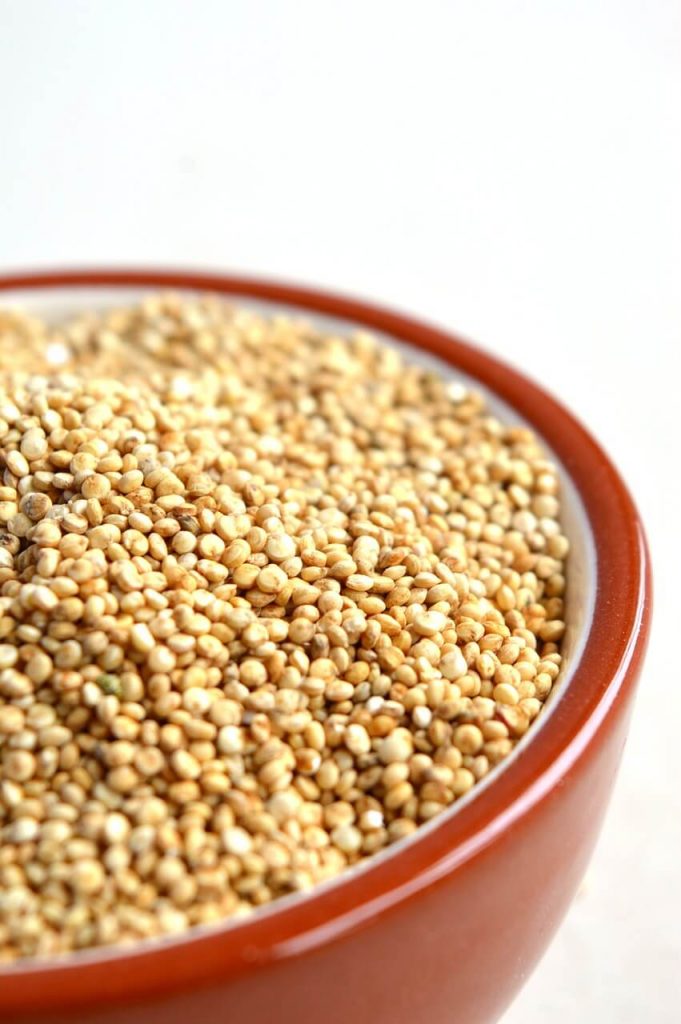
Rice
Rice, a staple in many cuisines around the world, is a versatile grain that comes in various types, such as long-grain, short-grain, and arborio, each with its own unique characteristics. While not a pasta, rice can be an excellent substitute for orzo in certain dishes. Here’s how you can use rice as a substitute:
- Type of Rice: Choose the type of rice based on the dish you’re preparing. Long-grain rice, like basmati or jasmine, works well in pilafs or as a side dish. Short-grain rice, such as Arborio, is ideal for creamy risottos.
- Cooking Method: Prepare the rice according to the specific variety’s cooking instructions. Whether you’re boiling, steaming, or using a rice cooker, ensure the rice is cooked to your desired level of tenderness.
- Versatility: Rice can seamlessly replace orzo in dishes like pilafs, casseroles, or risottos. Its ability to absorb flavors makes it a great canvas for various seasonings and ingredients.
- Texture: Keep in mind that rice has a different texture than orzo. Long-grain rice tends to be separate and fluffy, while short-grain rice can be creamy, depending on the recipe. Adjust the cooking method to suit the texture you desire.
- Risotto Alternative: If your recipe calls for orzo in a creamy dish, like a risotto, short-grain rice is an excellent substitute. Stir it gradually, allowing it to absorb the liquid and achieve a creamy consistency.
Rice can step in and play the role of a reliable substitute, adding its unique texture and versatility to your culinary creations.
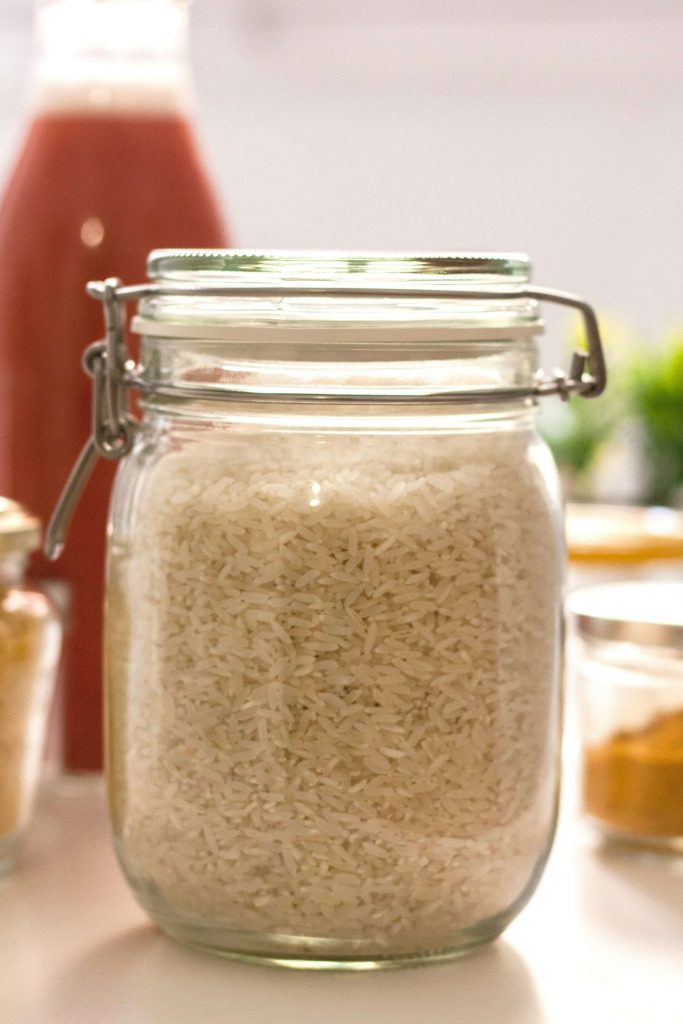
Barley as a substitute for Orzo
Barley is a nutritious whole grain with a chewy texture and a slightly nutty flavor. It has been a used for centuries and is versatile enough to be used in wide range of cooking. While barley differs significantly from orzo in terms of texture and taste, it can still be used as an effective substitute in certain dishes. Here’s how you can use barley as a substitute for orzo:
- Preparation: Barley requires a longer cooking time than orzo, so you will have to plan accordingly. Rinse the barley thoroughly and then cook it in water or broth until it becomes tender. This process may take around 40-60 minutes, depending on the type of barley, so allow plenty of cooking time..
- Texture and Flavor: Barley has a chewy texture, which can add a satisfying bite to your dishes. And its nutty flavor pairs well with a variety of ingredients. This makes it suitable for both savory and sweet recipes.
- Versatility: While barley won’t mimic all the aspects of orzo, it does work particularly well in soups, stews, casseroles, and salads. It has an ability to absorb flavors which makes it an excellent choice for dishes where orzo is a key ingredient.
- Nutritional Benefits: Barley is rich in fiber, vitamins, and minerals. It’s well-known for its health benefits, including promoting heart health and aiding digestion. If you’re looking to boost the nutritional content of your dish, barley is a great option.
- Risotto-Like Dish: You can use barley can in risotto-like dishes, creating a creamy and comforting texture. Stirring it gradually while adding liquid will help achieve a similar consistency to orzo risotto.
While barley may not replicate the exact qualities of orzo, it brings its own unique characteristics to the table.
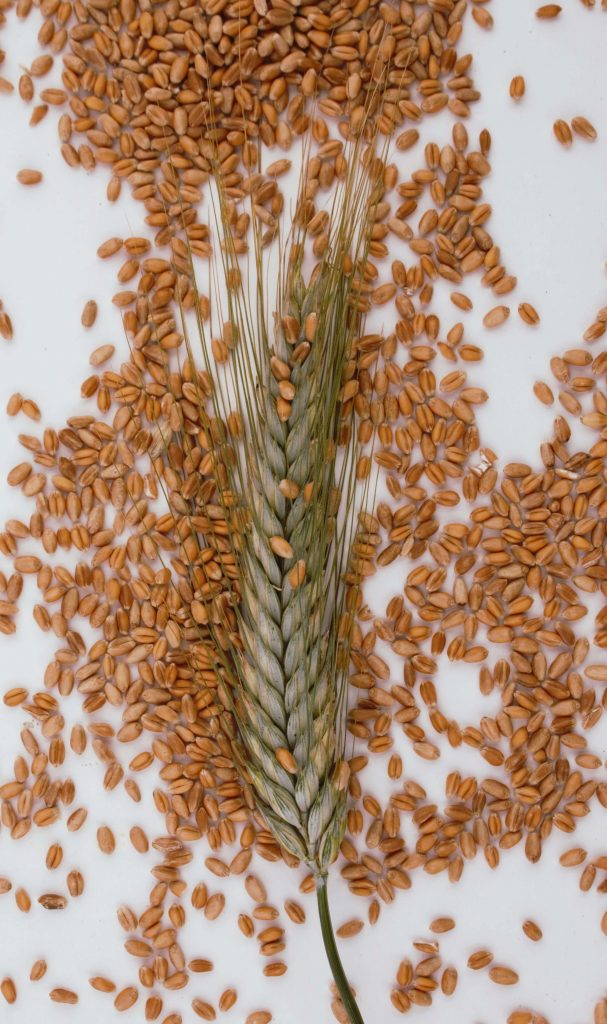
Farro as a substitute for Orzo
Farro is an ancient whole grain with a nutty flavor and chewy texture. It is often used in both Mediterranean and Italian cuisines. While farro is different from orzo in terms of size and texture, you can still use it effecively in certain recipes. Here’s how you can use farro as a substitute for orzo:
- Preparation: Rinse the farro thoroughly before cooking it in water or broth until it becomes tender. The cooking time can vary depending on the type of farro, but it shoud be ready in 20 to 40 minutes. Don’t overcook it or it will become stodgy.
- Texture and Flavor: Farro has a chewy texture and also a nutty, earthy flavor. This makes it a great addition to salads, soups, and other dishes where a more robust texture is desired.
- Versatility: While farro won’t replicate the small size of orzo, it works well in salads, pilafs, and side dishes where orzo is a key ingredient.
- Nutritional Benefits: Farro is rich in fiber, protein, and various nutrients. Did you know it is known for its health benefits, including promoting heart health?
- Salads and Pilafs: Farro is particularly well-suited for grain salads or pilafs. Combine it with fresh vegetables, herbs, and your favorite vinaigrette for a nutritious and satisfying dish.
- Risotto Alternative: Use farro in risotto-style dishes, creating a creamy and comforting texture. Though the texture will be different from orzo risotto, it offers a distinct and delicious twist.
While farro may not precisely replicate the qualities of orzo, it still makes a good substitute for orzo – give it a try.
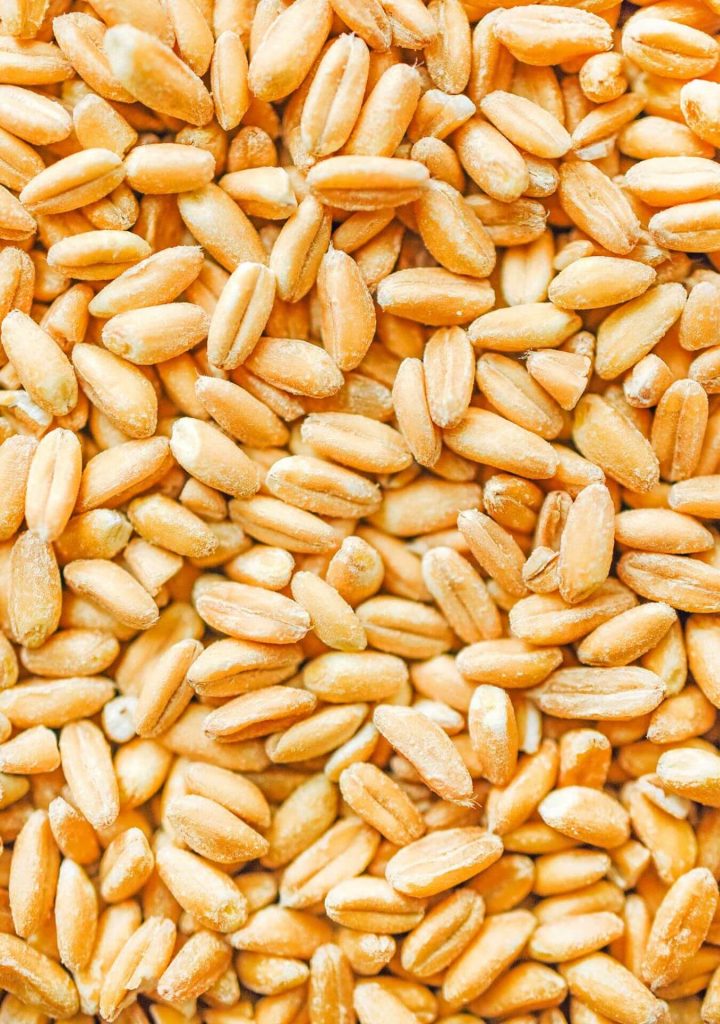
Pastina as a substitute for Orzo
Pastina refers to a variety of small pasta shapes that are often used in soups, broths, and other dishes. These tiny pasta shapes can come in different forms such as stars, alphabets, or small circles. While pastina may not be a direct substitute for orzo due to its distinct shapes, it can still be a charming and playful alternative in certain recipes. Here’s how you can use pastina as a substitute for orzo:
- Cooking Method: Cook pastina according to the package instructions. Since pastina is small, it typically has a shorter cooking time compared to larger pasta shapes. Cook until it reaches your desired level of tenderness.
- Versatility: Pastina is perfect for soups and broths, where its small size adds a delightful touch. It can also work well in casseroles and salads if you’re looking for a whimsical and fun pasta element.
- Texture: While the texture of pastina is different from orzo, its small size allows it to absorb flavors and become a cozy addition to soups and stews.
- Kid-Friendly Dishes: Pastina’s playful shapes make it a hit with kids. Why not use it in dishes that are geared towards a younger audience or when you want to add a touch of nostalgia to your meals.
- Quick and Easy: Pastina is convenient and quick to cook, making it an excellent choice for busy days when you need a speedy yet satisfying addition to your dishes.
While pastina may not be a one-to-one replacement for orzo in every recipe, its does make a delightful pasta alternative.
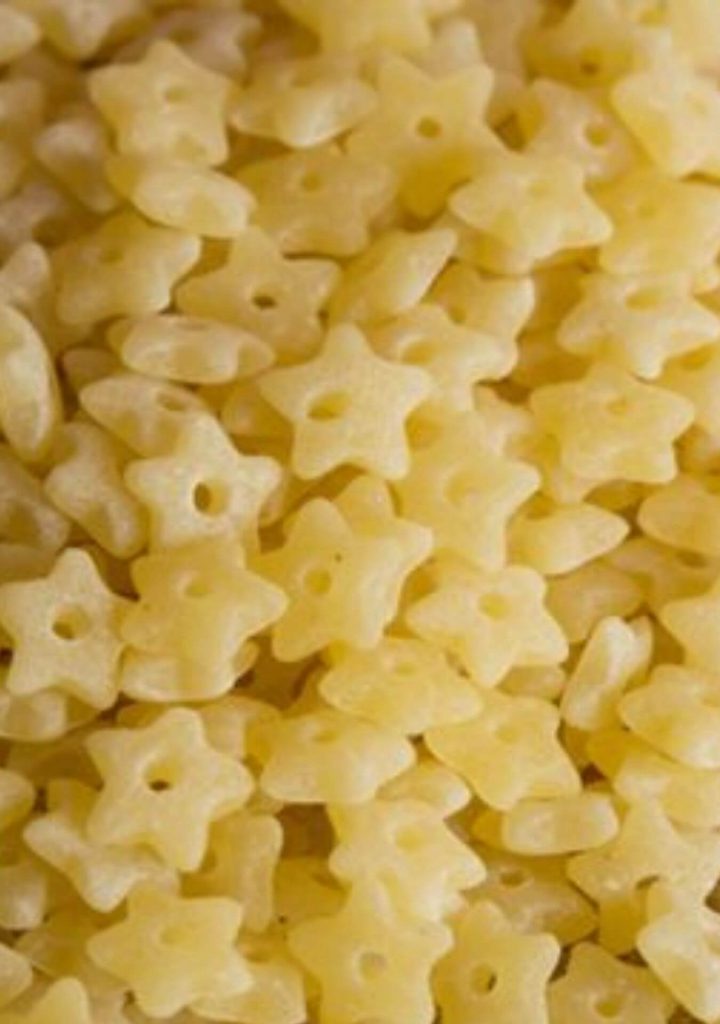
FAQs
Is orzo more like pasta or rice?
Orzo sometimes gets mistaken for rice because of its shape, but don’t worry, it is not rice it is definitely a pasta. Orzo is normally made from durum wheat, semolina, or whole grain flour, while rice is actually a grain. And whilst orzo has a smaller shape and size to rice, it can still be used as a substitute for rice in some dishes. However, all you need to remember is that they are basically different ingredients altogether.
Is orzo or rice healthier?
Orzo contains more protein than rice, but you also need to consider the carbohydrate and fiber content too. Whilst orzo does have a higher carbohydrate content per serving than rice, it also has a higher fiber content. This means that orzo will leave you feeling fuller for longer. Obviously this is a great benefit to anyone trying to lose weight.
Summary for Orzo Pasta substitutes
Okay – that’s you all sorted with suitable substitutes for Orzo Pasta.
Okay let’s look again at our list of the top 10 orzo substitutes:
- Couscous: The tiny granules of couscous are like orzo’s long-lost cousin. They’re quick to cook and have a similar mild flavor, making them a stellar substitute.
- Fregola: Hailing from Sardinia, Italy, fregola is like orzo’s bolder sibling. These toasted pasta balls bring a nutty flavor and a delightful chewiness to the table.
- Acini di Pepe: Tiny pasta pearls that are as cute as they are versatile. Acini di pepe works wonders in soups, salads, or any dish where small, round pasta is a star.
- Israeli Couscous (Ptitim): These larger, toasted pearls have a delightful nutty taste and a chewy texture, making them an excellent orzo alternative.
- Spaghetti: While spaghetti won’t replicate the size and shape of orzo, it can bring its own charm to your culinary creations.
- Quinoa: If you’re looking for a gluten-free alternative with a nutty flavor, quinoa is your go-to. It’s not pasta, but it sure works wonders in orzo-esque recipes.
- Rice: The classic go-to. Depending on the dish, opt for long-grain, short-grain, or even arborio rice for a creamy risotto vibe.
- Barley: Going back to orzo’s Italian translation, barley makes a hearty and nutritious substitute. It’s a bit chewier but adds a rustic touch to your dishes.
- Farro: An ancient grain that brings a nutty flavor and chewy texture. It’s a bit larger than orzo, but its versatility makes it a contender.
- Pastina: These tiny star-shaped or alphabet pasta can be a playful alternative. They’re not identical to orzo, but they add a whimsical touch to soups and stews.
We have gathered together a lot more facts on ingredients such as herbs, spices, oils, nuts, etc. if you would like to learn some more.
Or if you need to swap out another ingredient have a look at our Substitutes section.
